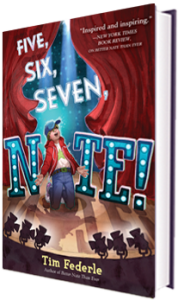 Here’s what it’s about:
Here’s what it’s about:
In the sequel to Better Nate Than Ever, Nate Foster’s Broadway dreams are finally coming true.
Armed with a one-way ticket to New York City, small-town theater geek Nate is off to start rehearsals for E.T.: The Broadway Musical. It’s everything he ever practiced his autograph for! But as thrilling as Broadway is, rehearsals are nothing like Nate expects: full of intimidating child stars, cut-throat understudies, and a director who can’t even remember Nate’s name.
Now, as the countdown to opening night is starting to feel more like a time bomb, Nate is going to need more than his lucky rabbit’s foot if he ever wants to see his name in lights. He may even need a showbiz miracle.
The companion novel to Better Nate Than Ever, which The New York Times called “inspired and inspiring,” Five, Six, Seven, Nate! is full of secret admirers, surprise reunions, and twice the drama of middle school…with a lot more glitter.
3 things for a young reader to love
1. The thing I loved the most about my childhood reading was being swept away to someplace new and exciting and this book has that in spades! The backstage look at Broadway as a child performer was fun and fresh and eye-opening. Even if you’ve never been in a show or wanted to perform there’s something appealing, and I think fairly universal, in the summer-campy, we’re-all-in-this-together vibe that Federle presents in this story.
2. For kids who do love the theater and are acting, singing, or dancing in community shows I think they’ll find a kindred spirit in Nate, who is such an appealing blend of strengths (memory for lines, heart, team spirit) and weaknesses (perhaps not the best dancer on the set). The arts are so often the red-headed stepchild of after school sports, it’s nice to have a book that celebrates theater with such unabashed joy.
3. The crush in a middle grade book is so tricky to get just right because middle grade kids are all over the map about romance, from deeply repelled to just as deeply intrigued. Nate hits the sweet spot with a story that manages to capture the intrigue of secret admirer notes and the slightly befuddled, what-just-happened-there of a first kiss without ever heading into territory that seemed to be icky or off-putting to the middle grade sensibility. Kids who are ready for a first kiss in a book will love this. Kids who aren’t quite ready for that probably won’t be grossed out.
Something for a writer to think about
Tim Federle has done something fairly amazing here. He’s got a story with a boy’s first kiss with another boy and yet it’s not a coming out story, not really even a story about being gay. The driving conflict in the story has everything to do with the show and orientation is not the contentious issue. Which seems exactly where the middle grade sensibility is with LGBT issues. The characters aren’t brimming over with anxiety about being gay because most kids in 4th to 8th grade are not at all concerned with the issues that drive such passion from older generations. It refreshing to see in print and I hope we see a lot more of it.
Likewise Federle has written a story with a kid who is a little self conscious about his body size without it being a book about a fat kid who needs to get thin. Nobody’s plaguing this kid to lose weight (although they’d like him to be a better dancer). He, in fact, doesn’t get in shape over the course of the story. His eventual triumph is based on his generous spirit, his ability to memorize other people’s parts, and his willingness to perform open heartedly. Qualities which have nothing to do with body type. Again, refreshing and well worth emulating! It’s got a razzle-dazzle cover, but this book is far more subtle than first meets the eye.
How I found this book
Unlike many of my reviews, I’ve never met the author. There are many theater-loving young people in my life which is why I picked it up at my public library and why I’ll be recommending it to lots of singing, dancing and acting kids I know.

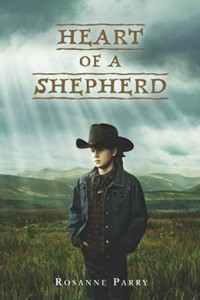
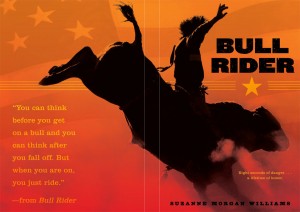
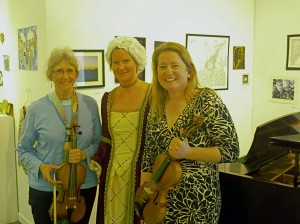

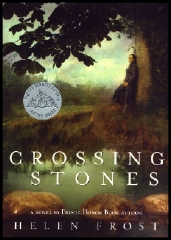
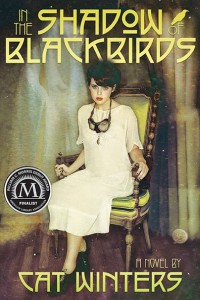
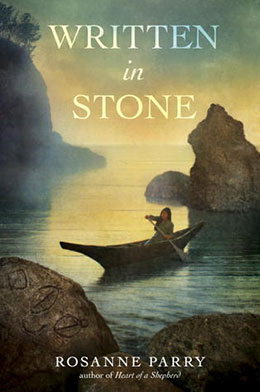
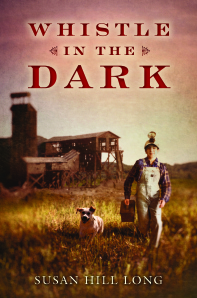

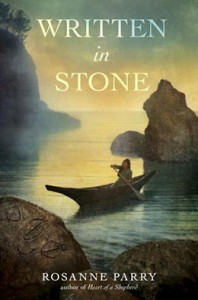 not mine is wrong. Making things up is what a fiction writer does. When the cover team was meeting I sent them a bunch of photographs of the Olympic Peninsula so they could get a feel for the ecosystem. The pictures included one of a petroglyph which is on public land and which commonly appears in works of non-fiction. I was so happy to see Richard Tuschman, the cover artist, incorporate a few petroglyphs on the cover–inventing an element in the style of this art but not stealing what’s not his to copy.
not mine is wrong. Making things up is what a fiction writer does. When the cover team was meeting I sent them a bunch of photographs of the Olympic Peninsula so they could get a feel for the ecosystem. The pictures included one of a petroglyph which is on public land and which commonly appears in works of non-fiction. I was so happy to see Richard Tuschman, the cover artist, incorporate a few petroglyphs on the cover–inventing an element in the style of this art but not stealing what’s not his to copy.

